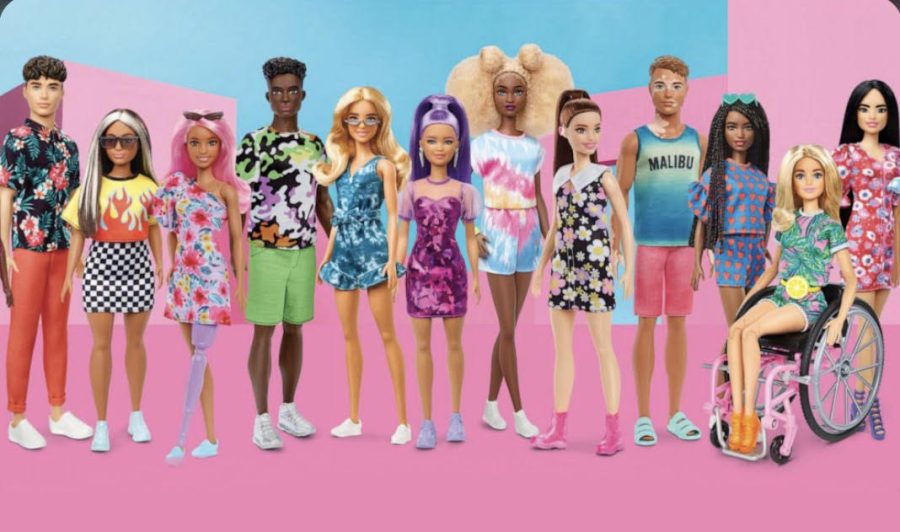Since its launch in 1959, Barbie has become a household name across the globe. Mattel’s glamorous dolls built them a brand that has generated billions of dollars. As their sales climbed, Barbie became the most recognizable and admired doll of the century. That legacy has remained, as Mattel continues to launch new lines of Barbie dolls today. However, as Barbie’s popularity grew, so did concern for her appropriateness. Worried parents believed that her image promoted dangerous and unrealistic expectations for their young, impressionable children. However, Mattel has made a significant effort to improve the quality and inclusivity of their brand.
Many people with knowledge of the Barbie brand felt that her appearance was pushing negative body type standards to young girls. Some found it questionable that a company was selling a toy to children with a body type so extreme, if she were a real person she would not be able to walk because of her proportions. In 1965, Mattel released a “Slumber Party Barbie ”whose package was complete with a diet book and scale that displayed 110 pounds on its screen. That book did not contain positive information on nutrition or eating a fulfilling diet. It came with only two words of instruction: “Don’t eat.” Understandably, some parents found this disturbing and unsafe to give to their children who were barely old enough to tie their own shoes. Sixth grader Sydney Elmquist agreed, “Not everyone looks or lives like Barbie, and the toy might make people feel self-conscious.”
It is important not to brush Mattel’s spotty history under the rug, but their brand has come a long way since these insensitive stereotypes. In 2019, Mattel put out the “Barbie Fashionistas” line, which showcased dolls of varying body types, skin tones, and hair. They continue to manufacture dolls of all different shapes, sizes, abilities, and ethnicities. Especially in recent years, the brand has become more inclusive to all kinds of appearances and lifestyles that are present in our society.
Barbie has also become a positive role model and figure for independence for young people. Over the course of its production, Barbie has been seen taking part in over 200 careers, including surgeon, veterinarian, pilot, astronaut, and even President of the United States. Especially since Barbie first appeared in a time period where strict gender roles were prominent, creating a female figure with ambition and determination gave many children the opportunity to have aspirations of their own. Eighth grader Annelise Bonn explained, “I remember seeing (Barbie) become president as a kid, and that really showed me that even though I’m a girl, I can do anything I put my mind to.”
On the whole, Mattel has developed an inclusive and mindful toy that has given children of all walks of life representation from an early age. She has motivated children to be proud of who they are and work hard to reach their goals. Barbie has battled against harmful gender stereotypes and inspired children to follow their dreams. Eighth grader Emily Chen confirmed, “Barbie definitely shaped who I am. She has made me a stronger person and taught me that I can do anything.”





